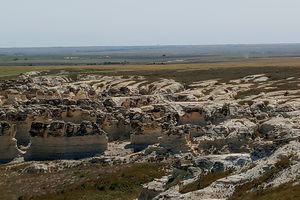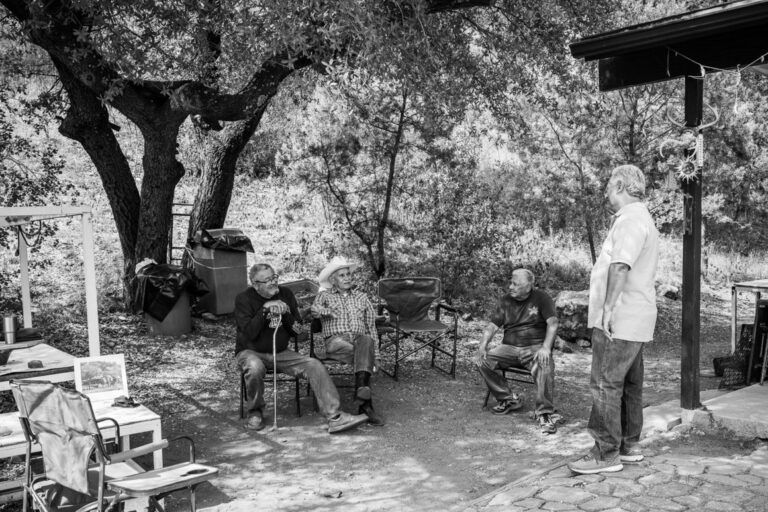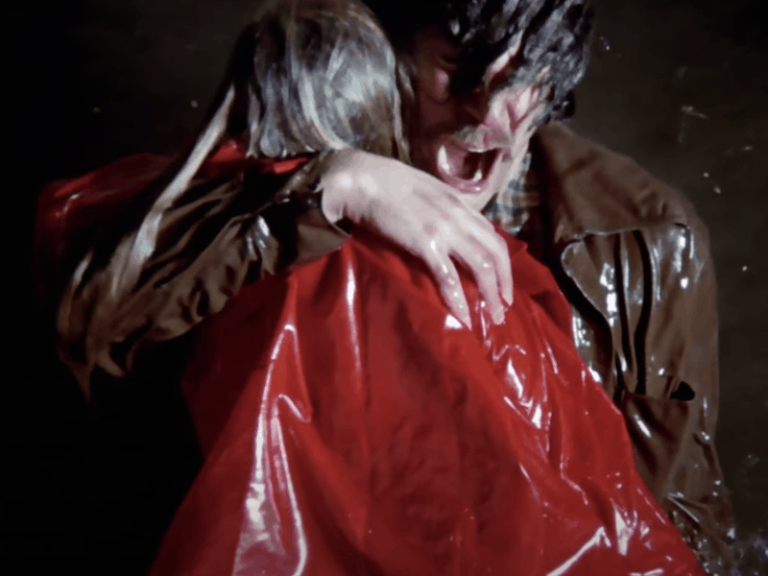Castle Rock Badlands in Quinter, Kansas

Utilized as a landmark for Native Americans and European settlers for centuries, Castle Rock itself stands 70-feet high on the otherwise gently rolling western Kansas prairie. It’s all that remains after the erosion of what was once the floor of the Western Interior Seaway from the Cretaceous Period.
This particular layer of rock is known as the Niobrara Chalk: lending its name to the University of Kansas’ Rock Chalk chant. The chalk is full of fossils from the sea such as giant clams, flying reptiles, and mosasaurs.
Castle rock is very fragile and will not last forever. In 2001, a large portion of the tallest spire fell after a thunderstorm, lopping ten feet off the overall height. All that remains of the fourth spire is a stub on the west end. The wind and rain that formed this geological wonder are still eroding it today. Human interaction has accelerated the process as well.
Just south of Castle Rock are the Castle Rock Badlands. The badlands consist of steep crevices and hoodoos leading off a large ridge. They are fragile as well, with one of the hoodoos known as Cobra Rock collapsing in 1998. Like Castle Rock and nearby Monument Rocks, the Badlands are comprised of Niobrara Chalk and shale.
The crevices provide shelter for several small plant and animal species. The hoodoos also provide perches and nesting areas for local birds such as Great horned owls, hawks, and kestrels. Visitors can also see lizards darting from hole to hole in the summer, Mule deer, antelopes, coyotes, kangaroo rats, jackrabbits, and prairie dogs.
The remoteness of the badlands allows visitors to feel as if they were the first to discover the region. The only hint of civilization are the nearby oil tanks and pumps scattered across western Kansas.





